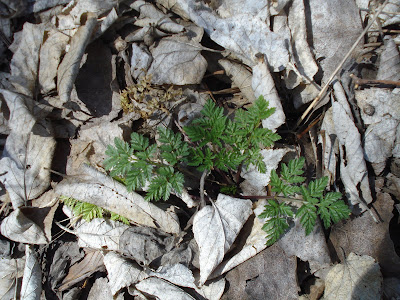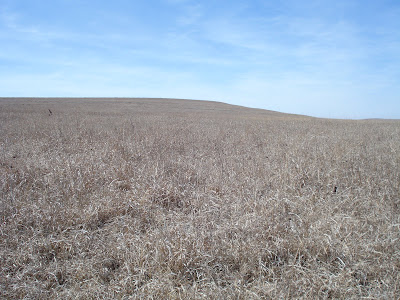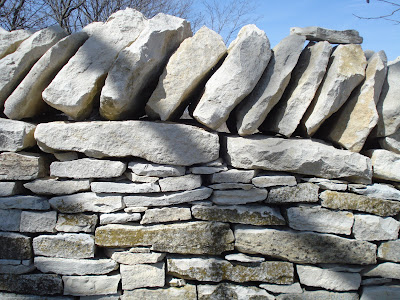
In March, the tallgrass prairie in Chase County, Kansas, is tan, brown and gray with specks of moon-colored limestone creeping through the grass. The Lower Fox Creek School was built with that rock--Cottonwood Limestone--in 1882.

The Ranch House at the Tallgrass Prairie National Preserve was known as Spring Hill Farm when cattle rancher Stephen Jones built it in 1887.

Spring comes to the banks of Wolf Creek.

The tallgrass prairie once covered 140 million acres of North America and was home to the Kansa, Osage, Wichita and Pawnee Native American tribes as well as millions of bison. Less than 4 percent of the prairie remains today, and most is in the Flint Hills of Kansas.

Prairie fence, 19th-century style.
But spring is fickle:
The above photos were taken on March 18, 2010; on the 20th--the first day of spring--we awoke to five inches of snow in eastern Kansas. I lured one of our neighborhood cardinals, "Mr. C," and snowbirds, sparrows and starlings to the porch during the snowfall.

A cowboy eating lunch at the Hitchin' Post in Matfield Green, Kansas (population 57 ), in the Flint Hills.
